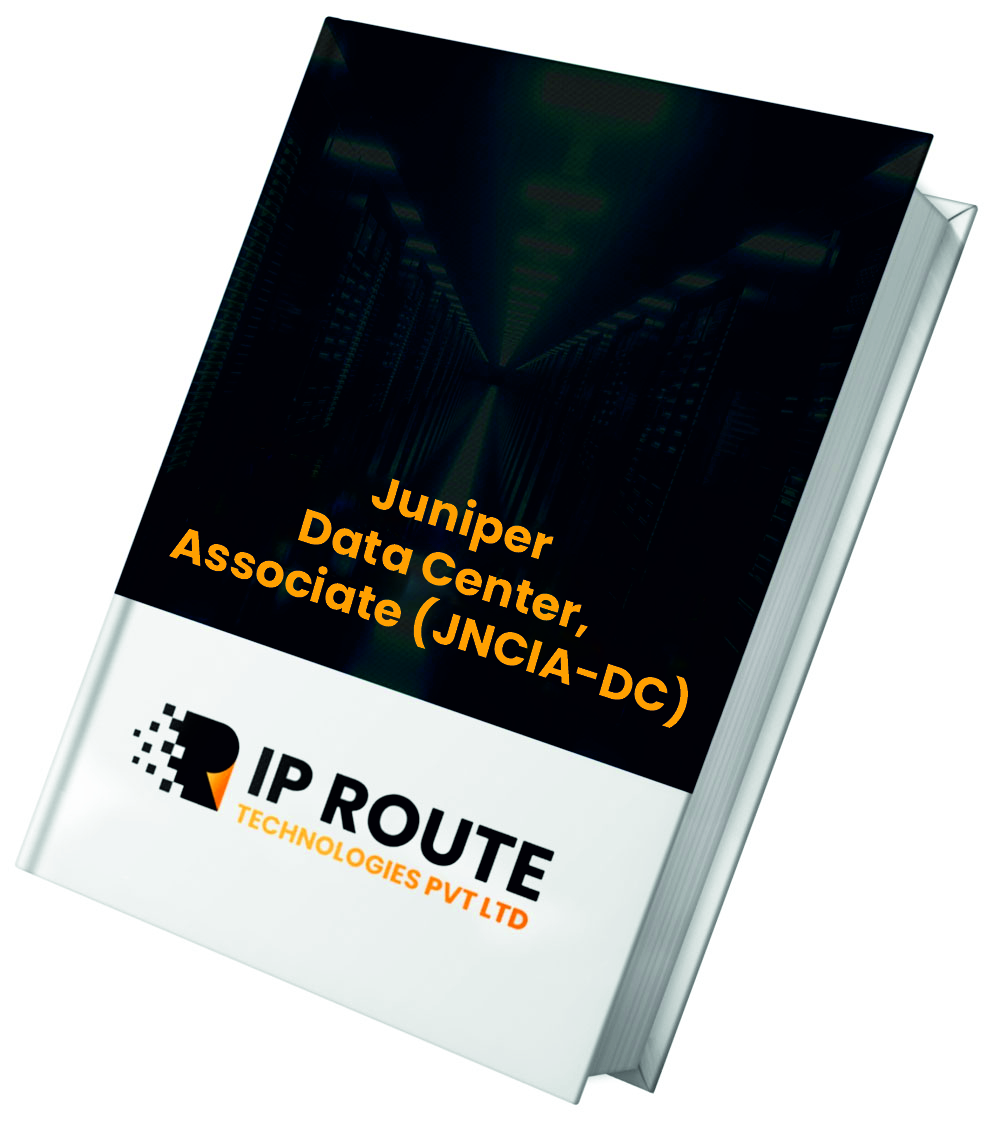Description
Course Summary
JNCIA-DC-TOPICS
Here’s a high-level view of the skillset required to successfully complete the JNCIA-DC certification exam.
- Identify concepts and general features of Data Center architectures
- Traditional Architectures (multi-tier)
- IP-Fabric Architectures (Spine/Leaf)
- Layer 2 and Layer 3 strategies
- Overlay Network versus Underlay Network (Very Basic)
- EVPN/VXLAN basics/purpose
- Identify the concepts, operation, or functionality of Layer 2 switching for the Junos OS
- Ethernet switching/bridging concepts and operations
- Identify the concepts, benefits, or functionality of VLANs
- Port modes
- VLAN Tagging
- IRB
- Identify the concepts, benefits, or functionality of Layer 2 Security
- MACsec
- MAC address control/filtering
- Storm Control
- Describe how to configure, monitor, or troubleshoot Layer 2 switching, VLANs, or security
- Ethernet switching/bridging
- VLANs
- Layer 2 security features
- Identify the concepts, operation, or functionality of various protocol-independent routing components
- Static, aggregate, and generated routes
- Martian addresses
- Routing instances, including RIB groups
- Load balancing
- Filter-based forwarding
- Describe how to configure, monitor, or troubleshoot various protocol-independent routing components
- Static, aggregate, and generated routes
- Load balancing
- Identify the concepts, operation, or functionality of OSPF
- Link-state database
- OSPF packet types
- Router ID
- Adjacencies and neighbors
- Designated router (DR) and backup designated router (BDR)
- OSPF area and router types
- LSA packet types
- Describe how to configure, monitor, or troubleshoot OSPF
- Areas, interfaces, and neighbors
- Additional basic options
- Routing policy application
- Troubleshooting tools
- Identify the concepts, operation, or functionality of BGP
- BGP basic operation
- BGP message types
- Attributes
- Route/path selection process
- IBGP and EBGP functionality and interaction
- Describe how to configure, monitor, or troubleshoot BGP
- Groups and peers
- Additional basic options
- Routing policy application
- Identify the concepts, benefits, applications, or requirements of high availability
- Link aggregation groups (LAG)
- Graceful restart (GR)
- Bidirectional Forwarding Detection (BFD)
- Virtual Chassis
- Describe how to configure, monitor, or troubleshoot high availability components
- Link aggregation groups (LAG)
- Graceful restart (GR)
- Bidirectional Forwarding Detection (BFD)
Schedule & Pricing
Please write to us at [email protected] for the price and upcoming schedule.
What Our Customers Say
I would like to thank IP Route and their team members because they are doing an outstanding job in serving people who have an ambition of getting into networking field as compared to others. Hands down the best choice for CCIE Infrastructure v1.1. Looking forward to enroll for more courses and recommend others.
Trainers at IP Route are super professional & friendly. Their labs are up to date and provide 24/7 support. I enrolled for CCIE Enterprise and my journey was amazing. If you are looking to start your journey in networking you should definitely choose IP Route.
Trainers at IP Route are super professional & friendly. Their labs are up to date and provide 24/7 support. I enrolled for CCIE Enterprise and my journey was amazing. If you are looking to start your journey in networking you should definitely choose IP Route.
My Journey with IP Route was awesome and the trainers are so knowledgeable the coaching style is convenient and easy. They helped me clear my doubts anytime I wanted with the best explanation to every topic. They guided me really well to clear my CCIE Enterprise lab exam, 5/5
Awesome experience:
Updated Labs, Great Support, Professional trainers, Overwhelming after sales support, Best CCIE
Updated Labs, Great Support, Professional trainers, Overwhelming after sales support, Best CCIE
I cleared my CCIE Enterprise with the guidance of IP Route and their mind-blowing training. I heard about IP Route through one of my friend and I’m glad I took his advice and enrolled myself, received the best training from the best instructors
Thankyou so much IP Route for guiding me from what to choose to today achieving my CCIE number. I passed my CCIE Enterprise exam only with the help of IP Route. They have the best hands-on lab which prepared me really well for my final exam. Would definitely recommend it to others.
Best institute to learn networking. The trainers are skilled and have really good communication. Also they provide lab facilities and even address any queries at any time of the day. The course fee is pocket friendly and have flexible payment methods with is great for a fresher too.


